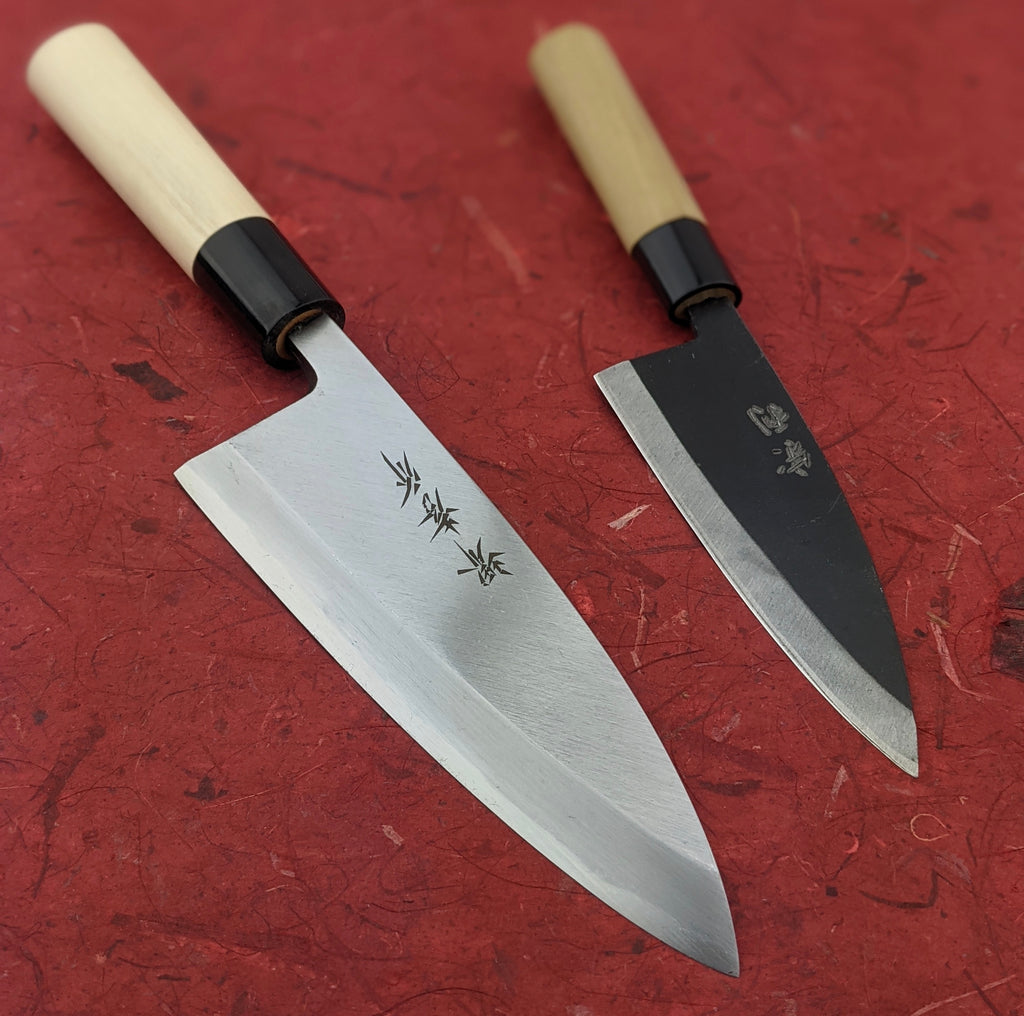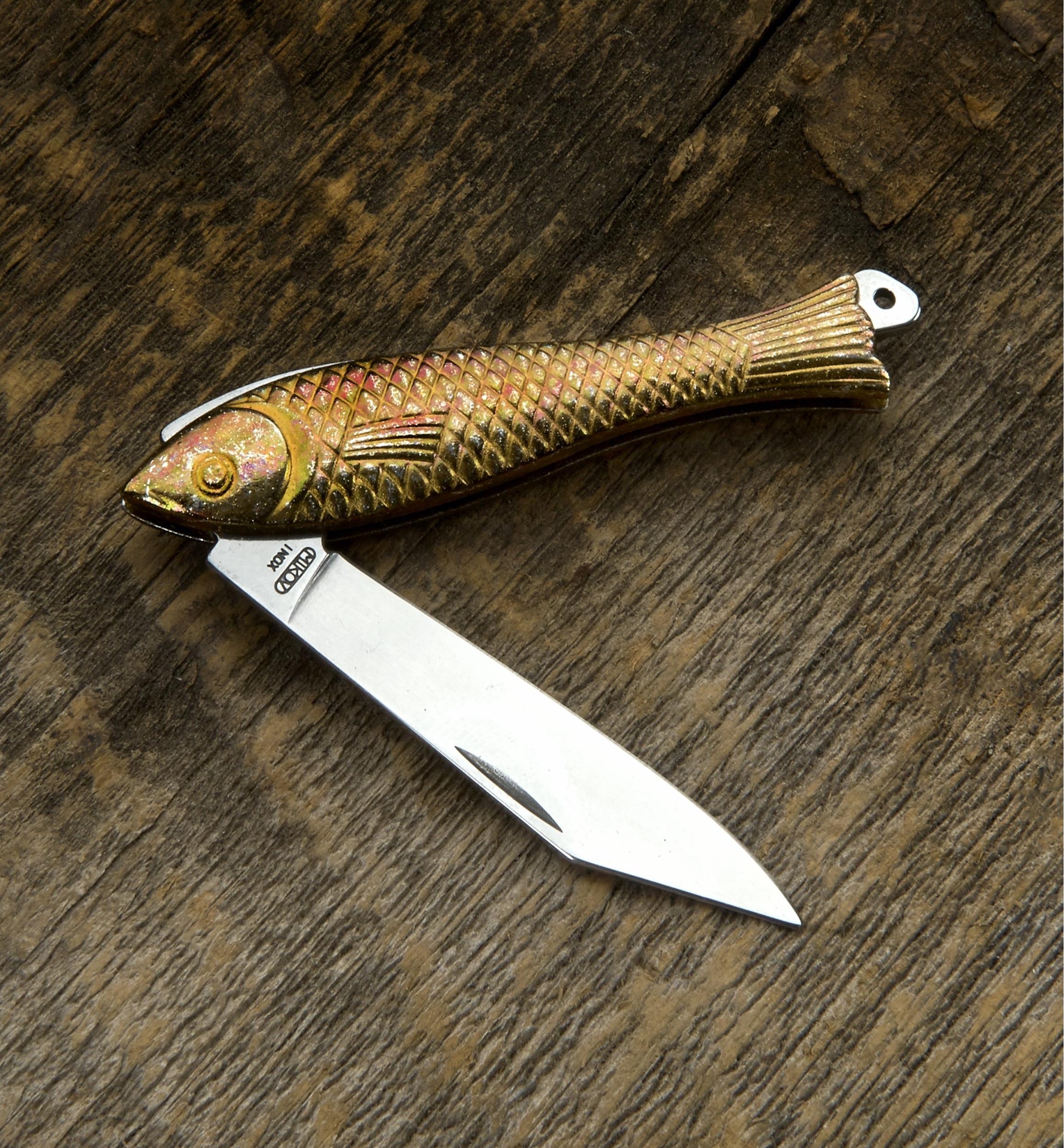Discover the Essential Attributes to Try To Find in a Top-Quality Fish Knife
When selecting a fish knife, several crucial functions require interest. The blade product dramatically impacts longevity and sharpness, while versatility plays an essential function in precision. In addition, the take care of style affects convenience during prolonged use. Edge retention and safety attributes are likewise essential for practical use. Understanding these elements will certainly direct customers towards making an enlightened selection, yet the subtleties of their relevance may not be instantly clear.
Blade Product and Building And Construction
The effectiveness of a fish knife greatly rests on its blade product and building and construction - fish knife. Top notch fish knives generally include blades made from stainless steel, high-carbon steel, or a mix of both. Stainless steel is preferred for its corrosion resistance and reduced upkeep, making it suitable for freshwater and deep sea atmospheres. High-carbon steel, while susceptible to rusting, uses exceptional sharpness and side retention, interesting those who prioritize cutting efficiency
The construction of the blade additionally plays a critical role in its performance. Full-tang blades, which prolong the entire size of the take care of, provide boosted toughness and equilibrium. In comparison, partial-tang blades may endanger longevity. Furthermore, the density of the blade must be considered, as thinner blades enable much more specific cuts, necessary for delicate fish filleting. Eventually, a sound blade, using the appropriate materials, is basic for achieving the ideal results when preparing fish.
Blade Adaptability and Length
Blade versatility and size are important factors that considerably affect the performance of a fish knife. A versatile blade permits accurate cuts and the capacity to maneuver around bones and skin, making it vital for filleting fish effectively. The correct amount of flexibility can improve control, making it possible for the user to accomplish tidy, smooth cuts with marginal effort.
In terms of length, fish blades commonly range from 6 to 9 inches. A longer blade is beneficial for bigger fish, giving the reach required for effective filleting. Conversely, a much shorter blade supplies maneuverability, making it suitable for smaller fish or complex jobs.
Inevitably, the selection of adaptability and length should align with the particular fishing requirements and choices of the customer. A healthy mix of these features ensures optimal performance, enhancing the overall fish preparation experience.
Deal With Style and Comfort
A properly designed manage is crucial for ensuring convenience and control when making use of a fish knife. The take care of need to fit securely in the hand, enabling a firm grasp throughout detailed jobs such as filleting or skinning fish. Products like rubber, timber, or composite provide different degrees of convenience and traction, influencing the user's experience.
Ergonomic features are likewise crucial; contours that follow the all-natural shape of the hand can minimize exhaustion during extended usage. Furthermore, the take care of's structure plays a significant duty in protecting against slippage, particularly when dealing with damp hands.
Weight distribution is an additional aspect that contributes to the overall equilibrium of the knife, enhancing ability to move. A comfy handle layout not only improves performance however additionally promotes safety, as a safe and secure hold decreases the danger of accidents (fish knife). Inevitably, a thoughtful deal with layout can substantially elevate the efficiency of a fish knife in culinary applications
Edge Retention and Developing
While utilizing a fish knife, keeping a sharp edge is critical for accomplishing tidy cuts imp source and accurate filleting. A quality fish knife ought to show outstanding side retention, allowing it to remain sharp via multiple uses. This particular is typically established by the kind of steel made use of in the blade; high-carbon stainless steel is often favored due to its equilibrium of solidity and corrosion resistance.

Security Functions and Sheath Options
Various security features and sheath alternatives are vital factors to consider when choosing a fish knife. A safe and secure and ergonomic manage decreases the threat of slides during use, boosting user safety and security. Distinctive grasps and finger guards additionally protect against mishaps, permitting far better control while filleting fish.
Furthermore, a blunt tip can decrease the risk of slit injuries, making it a safer selection for beginner customers.
Sheath choices additionally play a critical function in safety and security. A well-designed sheath shields the blade, avoiding unintended cuts when the knife is stored or moved. Sheaths made from resilient products, such as nylon or hard plastic, offer included protection against ecological elements.
Some sheaths include belt clips or loopholes, ensuring the knife is quickly obtainable while remaining safe. Inevitably, prioritizing security attributes and sheath alternatives contributes substantially to the total functionality and individual experience of a fish knife.
Regularly Asked Questions
What Is the Finest Brand Name for Fish Blades?
The best brand for fish knives typically varies by choice, but popular names like Wüsthof, Victorinox, and Reject are regularly recommended for their sharpness, craftsmanship, and toughness, making them top options amongst cooking fanatics and specialists alike.
Can Fish Blades Be Made Use Of for Various Other Kinds Of Fish?
Fish knives can indeed be made use of for various other types of fish. Their design and intensity make them flexible enough for numerous fish types, enhancing the overall experience of filleting and preparing various sorts of seafood.

How Do I Tidy and Maintain My Fish Knife?
To preserve a fish and cleanse knife, wash it with warm water after use, gently scrub with moderate soap, completely dry extensively, and store in a safety sheath to prevent damages and deterioration. Normal sharpening is vital.
Are There Fish Knives Especially for Left-Handed Users?
Yes, there are fish blades created especially for left-handed users. These blades include reversed blade angles and ergonomic deals with, making certain comfort and effectiveness for left-handed people while filleting and preparing fish. Quality alternatives are available from different makers.
What Is the Rate Range for Quality Fish Knives?
Quality fish blades typically range from $20 to $150, depending upon products, brand name reputation, and craftsmanship. Higher-end choices might include customized layouts and superior ergonomics, while budget-friendly choices still offer adequate efficiency for casual users.
The effectiveness my review here of a fish knife mostly pivots on its blade product and building and construction. High-grade fish blades typically feature blades made from stainless steel, high-carbon steel, or a combination of both. Blade flexibility and length are vital elements look these up that considerably influence the performance of a fish knife. Fish knives can indeed be utilized for various other types of fish. These knives include reversed blade angles and ergonomic takes care of, guaranteeing comfort and performance for left-handed people while filleting and preparing fish.